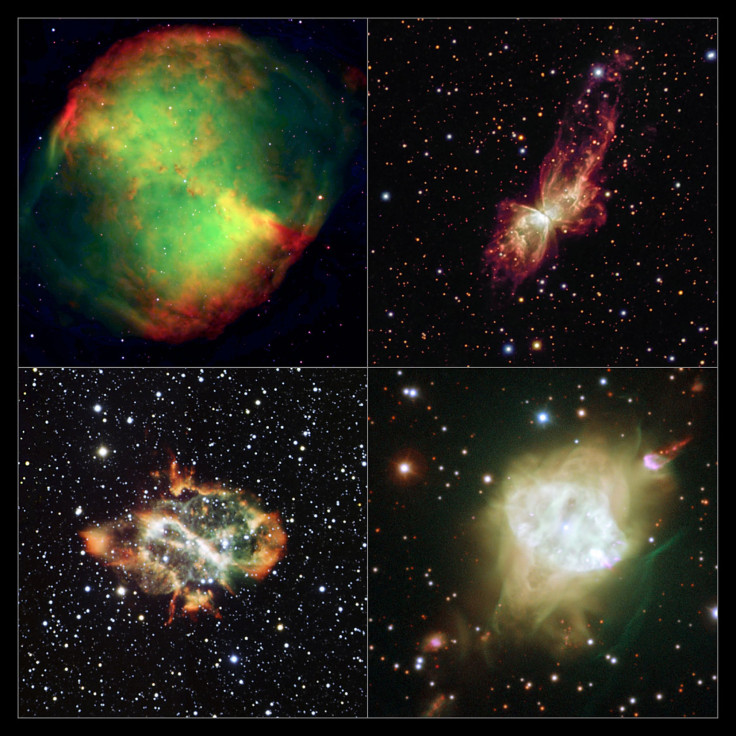Lining Up: Bipolar Planetary Nebulae Are Aligned In The Same Way, Puzzling Astronomers
Planetary nebulae come in all shapes and sizes, but astronomers have discovered the bipolar ones in the Milky Way share one thing in common: alignment.

Planetary nebulae are giant clouds of gas, consisting of a star’s outer layers, ejected near the end of a star’s life. Some of these nebulae, like the bipolar planetary nebulae, look like hourglasses, but despite all the differences in size and shape, many bipolar planetary nebulae line up in a similar fashion.
Astronomers from the University of Manchester discovered this “bizarre alignment” by using the Hubble Space Telescope and European Southern Observatory’s New Technology Telescope (NTT). The astronomers were observing 130 different planetary nebulae in the Milky Way’s central bulge and were able to classify these objects based on their appearance. Planetary nebulae can be classified as bipolar, elliptical and with or without an aligned internal structure. The study was published in Monthly Notices of the Royal Astronomical Society.
For bipolar planetary nebulae, astronomers discovered these objects were aligned in the same manner. The researchers knew that planetary nebulae can be shaped by nearby objects, such as planets orbiting the star or if the star is part of a binary star system but are unsure how these objects line up in the same way in space. Co-author Bryan Rees, from the University of Manchester, said in a statement, “The alignment we're seeing for these bipolar nebulae indicates something bizarre about star systems within the central bulge.”

The other types of planetary nebulae did not line up the same way, notes Rees. Bipolar planetary nebulae get their shape as the star ejects jets of gas perpendicular to its orbit. Rees says the alignment could, in theory, be caused by unusual stellar behavior. “For them to line up in the way we see, the star systems that formed these nebulae would have to be rotating perpendicular to the interstellar clouds from which they formed, which is very strange,” said Rees.
Further study will be needed to determine what exactly causes planetary nebulae alignment, but astronomers suggest the alignment may be due to the influence of the magnetic field that existed when the Milky Way’s central bulge, thousands of stars grouped together, formed. The mysteriously aligned bipolar nebulae could provide new insights into the early years of the Milky Way.
© Copyright IBTimes 2024. All rights reserved.












